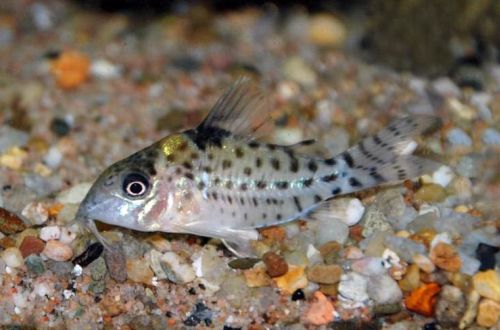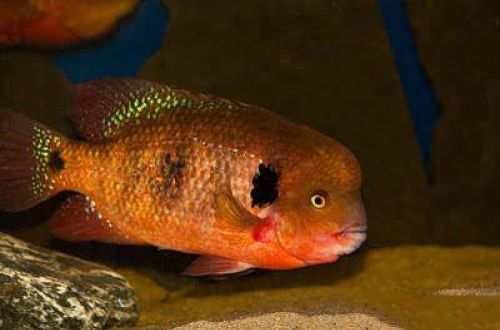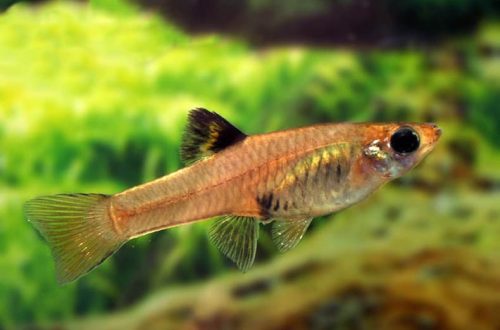
Ambiyaka corridor
Corydoras Ambiyaka or catfish Cory Ambiyaka, scientific name Corydoras ambiacus, belongs to the family Callichthyidae (Shell or Callichthy Catfish). Comes from South America. The natural habitat extends over vast expanses of the northeastern regions of Peru. The fish is named after the area where it was first discovered – the basin of the Ampiaaku River, which sounds like Ambiyaka in the dialect of the local population. The river is one of the many tributaries of the Amazon in its upper reaches.

Contents
Description
Adult individuals reach a length of about 6 cm. The body pattern consists of numerous dark specks on a silvery background. On the back at the base of the dorsal fin there is a large black spot preceded by a golden stripe. The fins have a similar spotted pattern, except for the pelvic and pelvic fins, which are uniform bluish-white.
Due to its spotted pattern, this species is often confused with other similar Cory catfish such as Black and White Corydoras, Agassiz Corydoras, Spotted Corydoras and others.
Brief information:
- The volume of the aquarium – from 80 liters.
- Temperature – 21-27°C
- Value pH — 6.0–8.0
- Water hardness – soft (2-12 dGH)
- Substrate type – sandy
- Lighting – subdued or moderate
- Brackish water – no
- Water movement – light or moderate
- The size of the fish is about 6 cm.
- Nutrition – any drowning
- Temperament – peaceful
- Keeping in a small group of 4-6 individuals
Maintenance and care
It will be a good choice for the beginner aquarist. Catfish is unpretentious and perfectly adapts to various conditions, so it does not need to recreate any specific habitat. You can populate in almost any freshwater aquarium, the main thing is to carry out the correct acclimatization. Thanks to his peaceful disposition, Cory Ambiyaka will get along with many non-aggressive fish of a comparable size.
The rules of keeping are simple and applicable to other aquarium species. It is impossible to allow the accumulation of organic waste (feed leftovers, excrement) that can disrupt the established nitrogen cycle. It is necessary to maintain the temperature and pH and dGH values in the acceptable range, regularly carry out maintenance of the aquarium: preventive maintenance of equipment, replacement of part of the water with fresh water, cleaning of the soil and decorative elements from plaque and debris.
Food. They will accept almost all food available on the market. The only condition is that they must be sinking, since the catfish is a bottom dweller.





